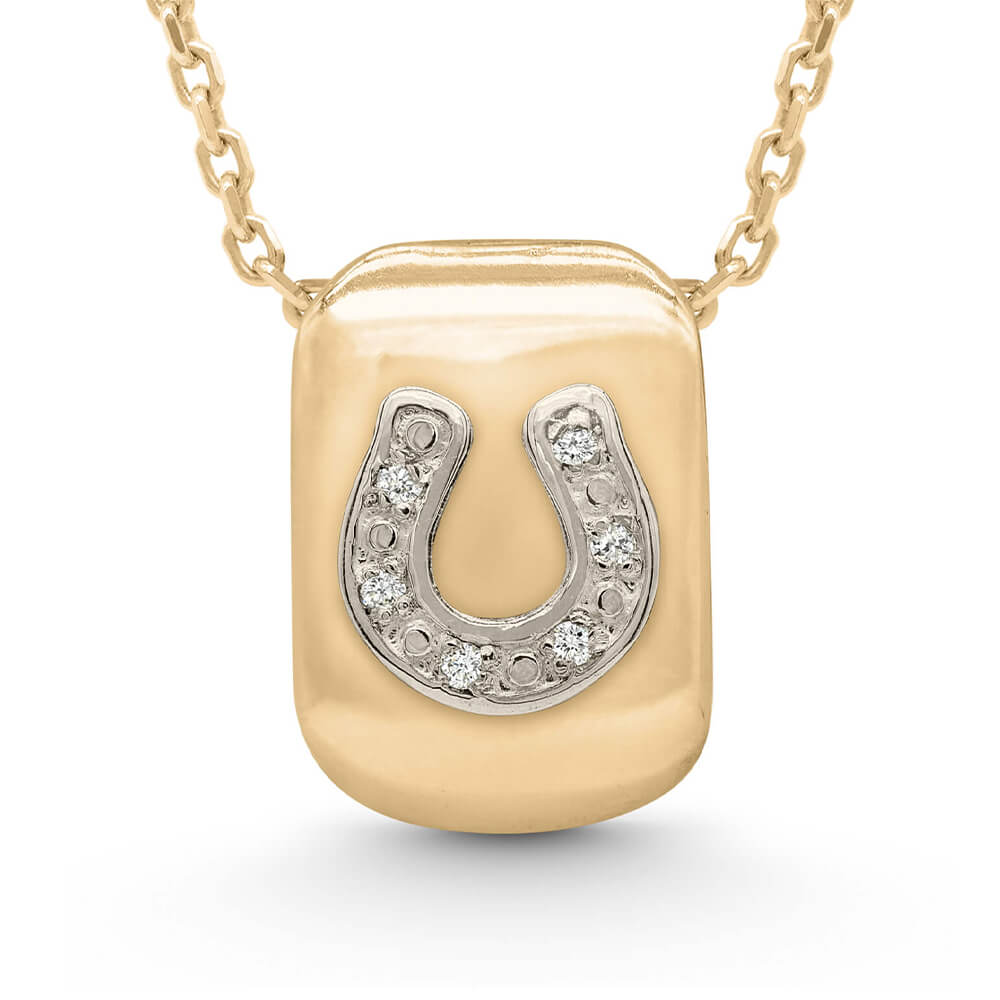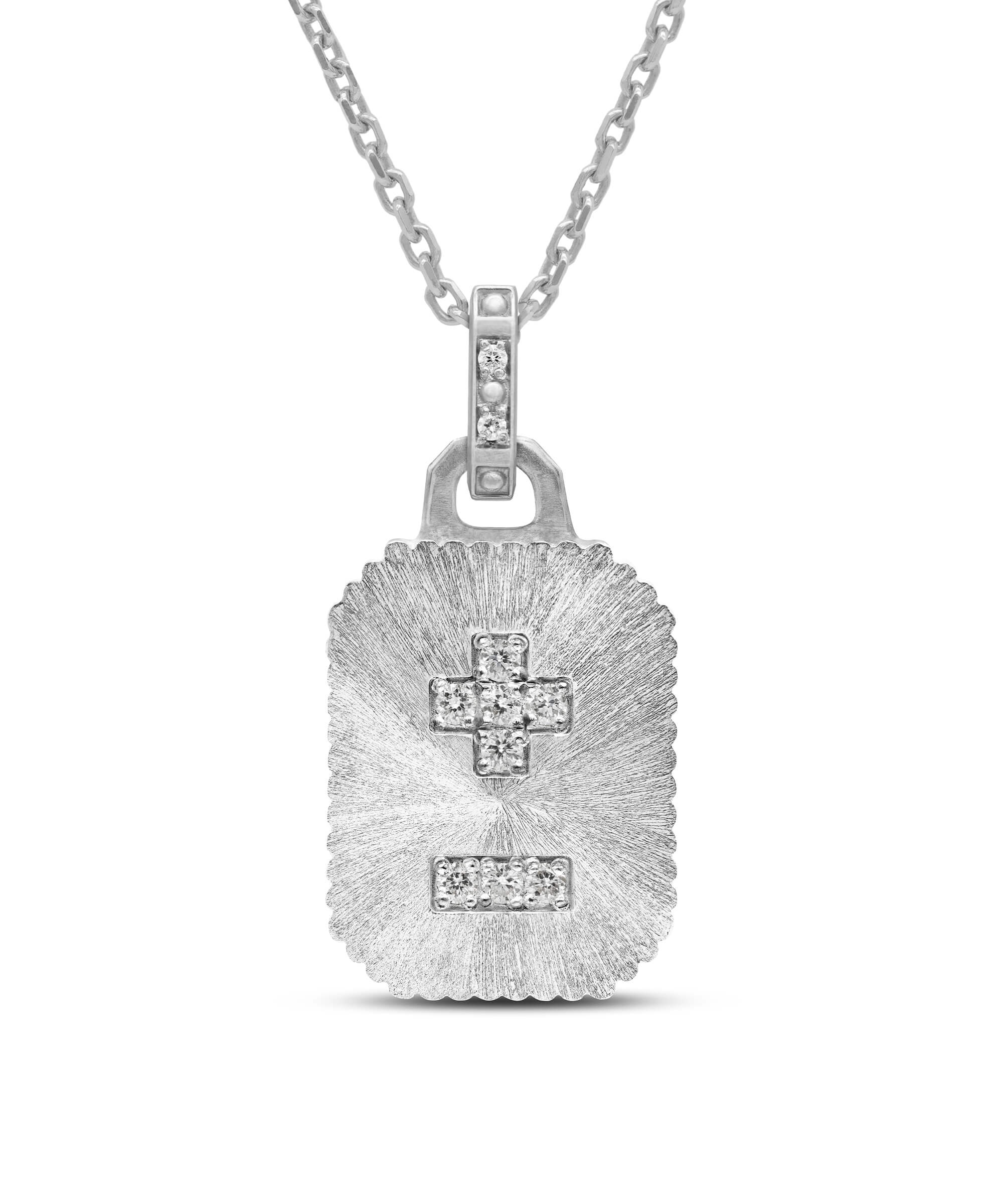Since the dawn of civilization, the horseshoe has been a powerful symbol of luck, protection, and prosperity. Its origins can be traced back to ancient times, where its U-shaped design was believed to ward off evil spirits and attract good fortune. Across various cultures and eras, the horseshoe has been revered as a talisman of hope and security, appearing in folklore, architecture, and jewelry. This exploration delves into the rich history and diverse meanings of the horseshoe, uncovering its timeless role as a symbol of optimism and protection in human culture.
Amuletha™ Book of Symbols
Horseshoe Symbol
*Shoeing Imaum by John Frederick Herring Sr.
"Shoeing Imaum" by John Frederick Herring Sr. is a fine example of his work. Herring, a notable 19th-century British painter, was celebrated for his equestrian and sporting scenes. Before rising to fame as an artist, Herring worked as a coach driver. He eventually received commissions from the British aristocracy, including Queen Victoria, to paint their prized horses.
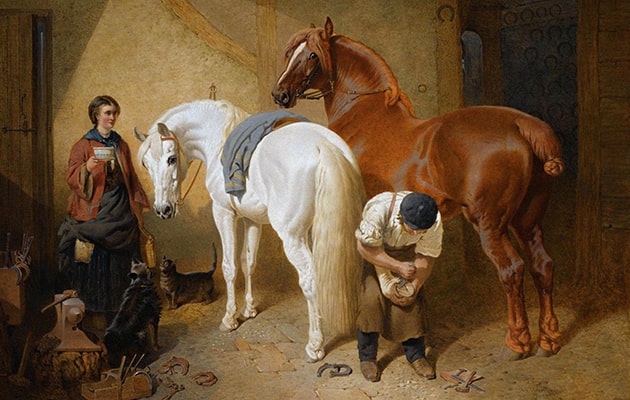
*Shoeing Imaum by John Frederick Herring Sr.
"Shoeing Imaum" by John Frederick Herring Sr. is a fine example of his work. Herring, a notable 19th-century British painter, was celebrated for his equestrian and sporting scenes. Before rising to fame as an artist, Herring worked as a coach driver. He eventually received commissions from the British aristocracy, including Queen Victoria, to paint their prized horses.
HORSESHOE SYMBOL ORIGIN
The horseshoe symbol dates back to ancient civilizations and has long been associated with good luck and protection. Its origins can be traced to the Greeks in the 4th century BCE, who believed that iron, from which horseshoes were made, possessed protective qualities against evil spirits. The U-shape of the horseshoe, resembling a crescent moon, was also considered auspicious by the Greeks, symbolizing fertility and prosperity.
During the Roman Empire, the tradition of nailing horseshoes to doors for protection against evil spirits became widespread. The practice was rooted in the belief that the iron would ward off witches and the U-shape would trap the evil spirits, preventing them from entering homes. This belief in the protective power of horseshoes continued through the Middle Ages, where they were often hung above doorways for good luck and to safeguard against misfortune.
The horseshoe's significance extended across various cultures, each attributing unique meanings and narratives to it. In Celtic traditions, horseshoes were believed to bring good fortune and were often used in rituals and ceremonies. In Western folklore, the placement of the horseshoe was crucial: hung with the ends pointing upward, it was said to collect luck; pointing downward, it was believed to shower luck upon those who passed beneath it. These diverse interpretations highlight the universal reverence for the horseshoe as a symbol of protection and good fortune across different epochs and civilizations.
What does horseshoe symbolize
The horseshoe symbol transcends cultures and time periods, rich with profound symbolism. Here are four most recognized interpretations of what the horseshoe conveys:
Luck
Hanging a horseshoe with its ends pointing upwards catches and holds good fortune, while pointing downwards allows luck to pour over those beneath it.
Protection
Horseshoes are believed to protect homes from evil spirits and misfortune, owing to the protective qualities of iron.
Prosperity
Displaying a horseshoe in a home or business is thought to attract financial success and abundance.
Hope
The horseshoe symbolizes hope and optimism, inspiring faith in better times ahead and serving as a charm for encouragement.
Cultural mention
The horseshoe, a symbol rich in history, has appeared in various cultures and legends. Its association with luck, protection, and prosperity has been celebrated across different traditions. From medieval European legends to modern pop culture references, the horseshoe continues to hold a significant place in human history. Its enduring presence in folklore and superstitions underscores the universal human desire for good fortune and protection.
The Legend of Saint Dunstan and the Devil
One of the most captivating stories involving the horseshoe symbol dates back to the 10th century and centers around Saint Dunstan, who later became the Archbishop of Canterbury. According to legend, Dunstan, who was a skilled blacksmith, was visited by the Devil, who asked him to shoe his horse. Instead of complying, Dunstan tricked the Devil by nailing a horseshoe onto his hoof, causing the Devil immense pain. Dunstan only agreed to remove it after the Devil promised never to enter a place where a horseshoe is hung above the door. This tale is often cited as the origin of the belief that horseshoes bring good luck and protect against evil spirits. Over time, this story has woven itself into the fabric of folklore, emphasizing the horseshoe's protective qualities and its power to ward off malevolent forces.
*Saint Dunstan and the Devil by Antoine St. Aubert

*Saint Dunstan and the Devil by Antoine St. Aubert
Goddess Epona the Protector of Horses
The Romans were among the first to use horseshoes made of iron, and they carried this practice throughout their empire. Horseshoes became associated with the Roman goddess Epona, who was revered as the protector of horses, donkeys, and mules. Epona was a significant deity for the Roman cavalry and those who worked closely with horses. She was often depicted with horses or holding a cornucopia, symbolizing abundance and prosperity. Romans believed that invoking Epona's protection through horseshoes would ensure the well-being and strength of their horses. Temples and shrines dedicated to Epona often featured horseshoes as offerings, and the goddess's influence extended to ensuring safe travel and success in battles.
*Goddess Epona watercolor painting by Julia Cellini
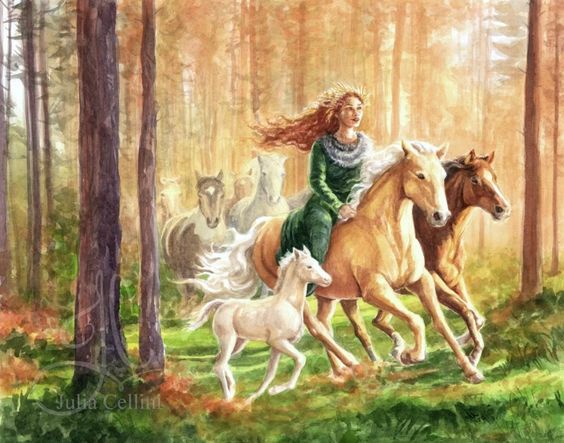
*Goddess Epona watercolor painting by Julia Cellini
The Horseshoe Arches
The horseshoe arch is a distinctive architectural element that has been widely used in Islamic architecture since the 7th century. Characterized by its rounded, horseshoe-like shape, this type of arch became a hallmark of Moorish architecture in Spain, particularly evident in the iconic Alhambra Palace in Granada and the Great Mosque of Córdoba. The design of the horseshoe arch not only serves an aesthetic purpose but also adds structural stability to buildings. Its graceful curve and intricate detailing often symbolize strength and protection, echoing the protective connotations of the horseshoe itself. The horseshoe arch has influenced various architectural styles beyond the Islamic world, including in Gothic and Romanesque structures, where it is appreciated for its beauty and engineering ingenuity.
Mosque-Cathedral of Cordoba
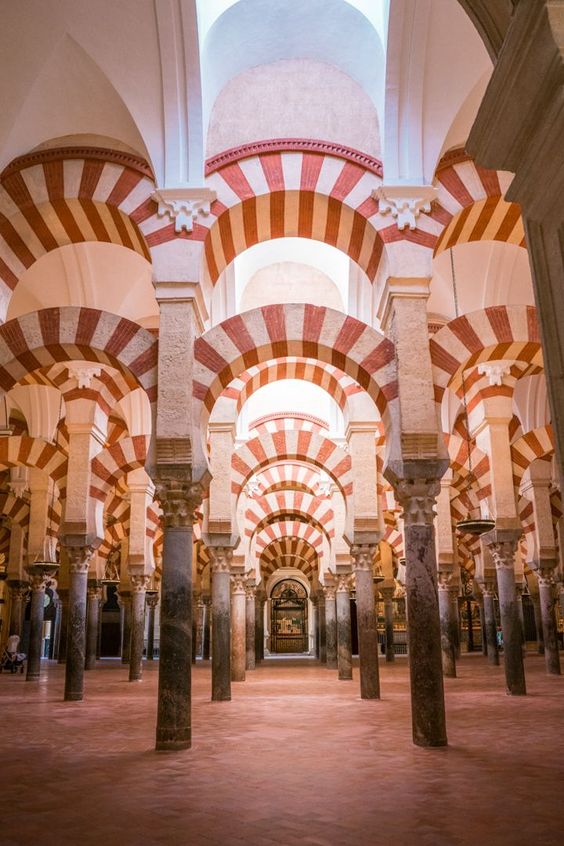
Mosque-Cathedral of Cordoba
Horseshoe symbol in the world of jewelry
Horseshoe symbols are often worn by individuals seeking luck and protection, spanning a wide age range from young adults to the elderly. The intention behind wearing this symbol is to invite good fortune and ward off evil spirits. The horseshoe's shape, traditionally believed to trap or repel negative energies, makes it a popular talisman. Typically, it is worn by those who hold a belief in its mystical properties, whether due to cultural traditions or personal experiences. This symbol also resonates with individuals looking for a touch of rustic charm or those with an affinity for equestrian culture. The horseshoe is frequently associated with religious connotations, particularly in Christianity, where it is believed to protect against the devil.Gifting a horseshoe symbol is a gesture loaded with meaning. It signifies a wish for good luck and protection for the recipient, making it a thoughtful gift for milestones like housewarmings, weddings, or new ventures. For instance, giving a horseshoe necklace to a friend starting a new job symbolizes support and well-wishes for their success. Similarly, presenting a horseshoe charm at a bridal shower conveys hopes for a happy and prosperous marriage.
What does a horseshoe symbolize in literature?
The horseshoe, with its rich connotations of luck and protection, holds a significant place in literature. This symbol is often used to represent characters' hopes, struggles, and beliefs in fate or divine intervention. It appears across various genres, from folklore and fairy tales to modern novels, frequently exploring themes of fortune, superstition, and resilience. Its powerful role in storytelling underscores the deep cultural and emotional resonance that the horseshoe symbol carries.
“Little House on the Prairie” by Laura Ingalls Wilder
In Laura Ingalls Wilder's "Little House on the Prairie" series, the horseshoe symbol is used to represent the pioneering spirit and the belief in good luck and protection. The Ingalls family, facing numerous challenges as they settle in the American frontier, relies on the horseshoe as a token of good fortune. This symbol captures their resilience and hope, reflecting the historical context of settlers who clung to such beliefs to navigate the uncertainties of their journey. The horseshoe's presence in Wilder's work underscores the blend of practicality and superstition that characterized frontier life.
Photo from the famous "Little House on the Prairie" TV series.
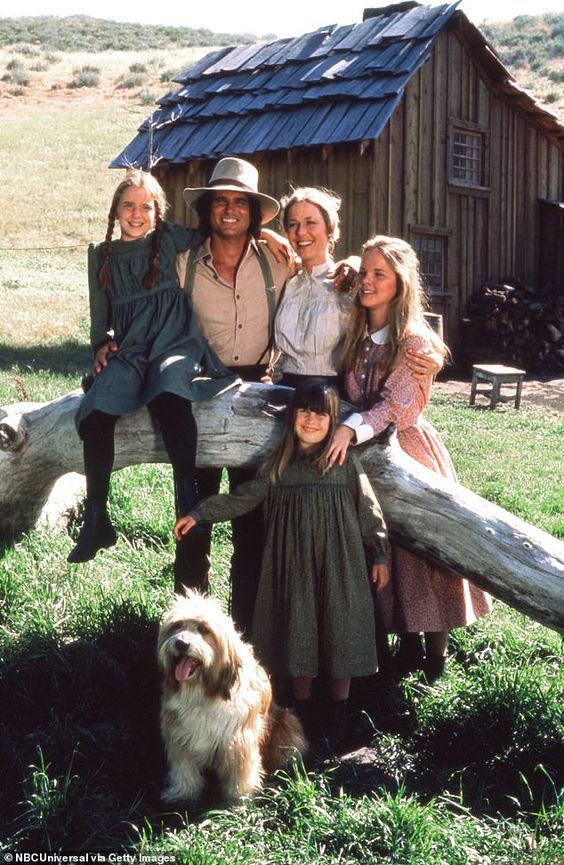
"The Horseshoe" by Paul Laurence Dunbar
There are no oaths to bind us, but by the horseshoe's might,
We'll keep the bond unbroken, and ever in our sight.
Through storm and shine, together, we'll stand and never part,
For in the horseshoe's power, we hold each other's heart.
This poem celebrates the horseshoe as a symbol of unity and commitment, highlighting its power to forge strong bonds and inspire loyalty.
"The Horseshoe Nail" by John Godfrey Saxe
For want of a nail, the shoe was lost,
For want of a shoe, the horse was lost,
For want of a horse, the rider was lost,
For want of a rider, the battle was lost,
For want of a battle, the kingdom was lost,
And all for the want of a horseshoe nail.
Saxe's poem uses the horseshoe nail to illustrate the importance of seemingly small details and their impact on larger outcomes, emphasizing the interconnectedness of events.
"The Luck of the Horseshoe" by Eugene Field
And I nailed it up by the chimney jamb,
That a charm against all harm might be,
And the horseshoe's magic did work its spell,
For blessings and luck were brought to me.
No evil could enter, no trouble could stay,
With the horseshoe's protection night and day.
Field's poem captures the protective qualities of the horseshoe, portraying it as a guardian against misfortune and a bringer of good luck to the household.
Thoughts
Thoughts placed alongside a symbol resonate with its meaning, serving as a guide to expand your understanding of the symbol's significance in relation to your personal experiences. AMULETHA™ also embraces this approach, invites a deeper contemplation of how symbolic meanings can reflect and enrich your life’s narrative, enhancing your appreciation of both the symbol and its broader implications.
Fortune's Embrace - Hanging a horseshoe with ends pointing upwards captures luck, holding it within; downwards, it showers blessings upon those beneath.
Guardian Iron - Iron's protective essence wards off evil spirits and misfortune, safeguarding homes with its ancient, mystical power.
Prosperity's Call - A horseshoe's presence invites financial success and abundance, drawing wealth and opportunity into homes and businesses.
Hope's Promise - The horseshoe symbolizes hope and optimism, a charm inspiring faith in brighter days and encouraging spirits.
FREQUENTLY ASKED QUESTIONS
What Does an Upside-Down Horseshoe Signify?
An upside-down horseshoe signifies the pouring out of luck and blessings onto those below it. It is believed to shower good fortune and positive energy from its open ends.
Is the Horseshoe Considered Lucky or Unlucky?
The horseshoe is generally considered lucky. It is believed to bring good fortune, protection, prosperity, and hope when displayed properly.
What does the horseshoe symbolize in the Bible?
The horseshoe, which protects the horse’s hooves, symbolizes the horse's biblical associations with strength, power, and authority (Job 39:19-25). As the horse is prepared for battle (Proverbs 21:31), the horseshoe embodies the capacity to move forward with strength, power, and authority.
What is the meaning of finding a horseshoe?
Discovering a horseshoe is often linked to two key beliefs: it is seen as a sign of impending good luck and serves as a protective charm against potential misfortune.








